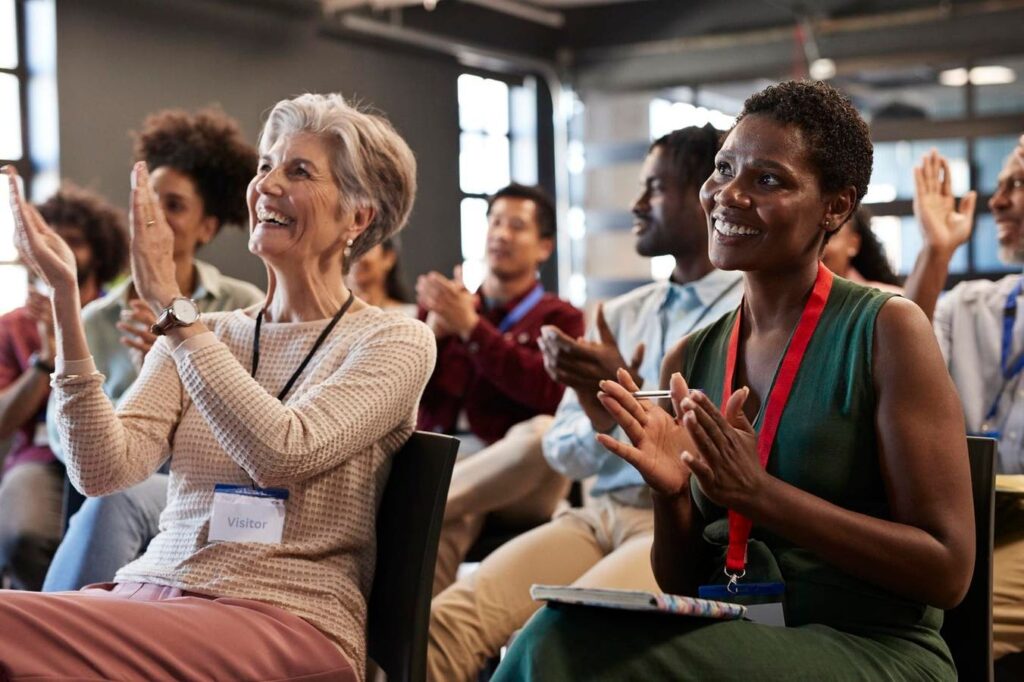Shawn Pierce is president of the Strategic Events, Meetings & Incentives (SEM&I) division at MCI USA.
It’s something I never expected to see in my 30-year career: A full 35% of employees now work at home part time or full time.
The rise of remote and hybrid work has certainly improved work-life balance and flexibility. But it has also created a need for more opportunities for engagement and connection in real life, including connections between leadership and employees, companies and clients, and businesses and the audiences they seek to engage.
In this new reality, in-person events can be highly valuable. While Zoom meetings offer convenience and accessibility, I’ve found that real-life interactions at annual meetings, training seminars and user conferences can foster deeper connections, collaboration and rapport that are difficult to achieve in a virtual setting. Additionally, by bringing stakeholders together in one place, events like these help companies reduce the carbon footprint of flying executives around the world to meet with customers or partners individually, lowering the environmental cost of doing business.
Based on my experiences working with companies to improve their strategic event planning, here is a closer look at what in-person events can do for your workforce and how you can ensure the best results from your events.
The Untapped Power Of In-Person Events
In-person events are more than social gatherings or travel junkets—they can also be worthwhile investments in our people, our brands and the future success of our companies. The benefits of these events can extend far beyond the immediate experience, delivering tangible ROI in four key areas:
1. Boosted employee engagement and retention:
Amid a growing work-from-home (WFH) culture, how can businesses maintain a strong company culture when employees are physically separated? In-person events can create opportunities for more meaningful relationships to grow, fostering a stronger sense of belonging and community. In fact, in a survey by the Harvard Business Review, 95% of respondents said face-to-face meetings are key to successful long-term relationships in the workplace.
2. On-Message Leadership Positioning
Events provide a controlled environment where your company’s messages can be curated and delivered with precision to employees, clients, partners and your industry as a whole. For example, Salesforce’s Dreamforce tech event draws more than 180,000 attendees annually. Since the event is designed and produced by Salesforce, the arc and narrative of the conference’s messaging can be kept in close alignment with the company’s goals and future vision.
3. Strengthened Relationships And Trust
In my experience, face-to-face interactions foster genuine connections and trust—cornerstones of a successful business/client relationship. As company representatives and clients get to know each other on more than a superficial level, this connection can help them feel more confident that they have each other’s best interests at heart in current and future deals.
4. Accelerated Innovation And Collaboration
Finally, in-person gatherings are proven to spark collaboration and innovation. A Stanford experiment found that in-person teams generated 15% to 20% more ideas than virtual teams. It also found that ideas generated by in-person teams received higher ratings for originality than those from virtual teams.
How To Create Effective Events
Creating successful corporate events requires more than logistics and venue selection. To harness creativity and innovation, you need to bring people together in ways that inspire, engage and connect. Here are four best practices to consider when planning your next event:
• Design experience-driven engagements. Memorable events should engage attendees emotionally and intellectually. Define your desired outcomes—whether it’s inspiration, stronger connections or renewed purpose—and build the experience with storytelling, interactive elements and creative spaces.
• Foster connection and collaboration. Structured programming is important, but real value often emerges in unstructured moments. Curate networking lounges, interactive workshops and/or brainstorming sessions to encourage spontaneous collaboration.
• Create inclusive, personalized experiences. Tailor your event to meet audience needs. I’ve found that when attendees feel seen and valued, their loyalty and engagement deepen.
• Measure impact and improve. Go beyond head counts. Use surveys, social media analysis and post-event debriefs to refine your approach. Pair metrics with real stories to capture the full picture.
As digital interactions become more prevalent, in-person events are an example of the enduring power of human connection. When we invest in our people, our clients and our industries, we can build trust, foster innovation and create a sense of belonging that transcends the limitations of screen time to create real-world value.
Forbes Business Council is the foremost growth and networking organization for business owners and leaders. Do I qualify?
Read the full article here

